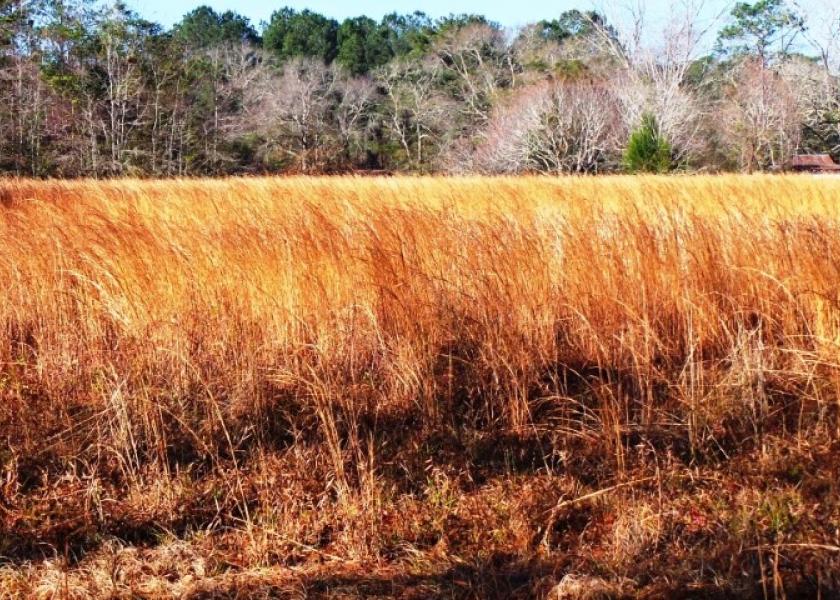Pasture Soil Fertility Essential to Prevent Broomsedge Infestations

Broomsedge bluestem goes by many common names; broom grass, broom sage, sage brush, etc. No matter the name it is a sign of poor soil fertility.
By: Mark Mauldin, University of Florida Extension
Broomsedge bluestem, or Andropogon virginicus L. is quite conspicuous this time of year. Its tall stems are the most noticeable feature in many fields. While these tall stems blowing in the wind may look nice, what they represent in terms of soil fertility is anything but that. Broomsedge thrives in conditions that are considered poor for most desirable grass species.
Some consider broomsedge bluestem a forage species because livestock will graze green, young growth. However, as the growing season continues the grass produces its signature tall stems and seed heads, and becomes very unpalatable to livestock. That is why most producers consider it a weedy grass when it is found in improved pastures.
Broomsedge bluestem is a native grass, and as such it is quite hardy in relation to environmental factors. Broomsedge grows well in acidic soils with low levels of nutrients. It is also rather tolerant of drought conditions. These factors help to make it very persistent once it is established in a given area. This persistence is a source of frustration for pasture managers because broomsedge is difficult to get rid of once it is established.
- There are no herbicides on the market that will control broomsedge without also killing the surrounding desirable grass species (bahia, bermuda, etc.)
- Mowing does not provide effective control of broomsedge
- Burning has little to no negative effect on broomsedge
Efforts to prevent broomsedge bluestem are much more productive than efforts to control it. Broomsedge is not competitive with improved forage grass species, if conditions are favorable for the improved species. From a management standpoint this means;
- Maintain proper soil pH levels (5.5 for bahia and bermuda)
- Apply fertilizer at the recommended rates and intervals (UF/IFAS fertilizer recommendations)
- Utilize multiple pasture rotation to prevent overgrazing
When the steps above are not taken, conditions are created that favor the growth of broomsedge allowing it to become competitive with desirable species. These conditions combined with a thin stand of desirable grass allow broomsedge seeds to find bare soil and establish/spread rapidly.
Once broomsedge is established control options are limited. If only small amounts of broomsedge are present, spot spraying with glyphosate may be an option. While glyphosate is effective, if applied to actively growing broomsedge, it will also kill the surrounding desirable grasses. This ultimately results in bare soil, which could lead to new weed problems or re-infestation by broomsedge if soil conditions have not been corrected. Complete pasture renovation may be required for serious infestations, which could include rotation to row crops for a year or two, followed by replanting of desirable grass species.
The steps to achieving long term control of broomsedge are the same as preventing it; take care of your pastures. Improving the growing conditions for desirable grasses will help them out compete the broomsedge, but it may take several growing seasons to do so. After efforts have been made to improve soil fertility, steps may be taken to reduce the vigor of the existing broomsedge. Regular grazing early in the growing season can help suppress broomsedge. This practice is more effective in areas where broomsedge is well established and livestock have little choice but to graze the broomsedge.







